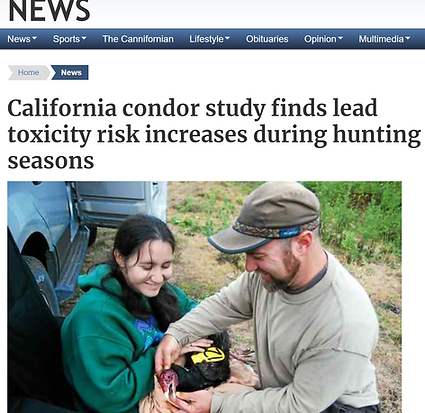
Wolfe Laboratory
Michigan Technological University
Our research was featured in The Guardian highlighting alarming bird population declines in the Amazon, even in its most pristine regions. These findings underscore the urgency of addressing climate-driven biodiversity loss in one of the world's most critical ecosystems. Our work continues to explore the long-term impacts of environmental change on tropical bird populations and conservation strategies to mitigate these threats.
The article highlights ongoing research into experimental bat hibernacula aimed at understanding how specific conditions help bats survive white-nose syndrome, focusing on identifying key factors, such as temperature and humidity, that could provide protection for affected bats, with the goal of using these findings to inform conservation strategies.
Published by All About Birds, the article highlights alarming declines in tropical bird populations, and parallels North America's bird trends. It underscores the importance of our long-term research to better understand the impact of climate change and ecosystem disruptions, and to develop effective monitoring strategies to address these declines.
The USFS featured our research using "avian ambassadors" and "tribal perspectives" to better integrate cultural burning practices into forest management in Northern California and Southern Oregon.

Our research, in collaboration with the USDA Forest Service and Klamath Bird Observatory, focused on using culturally significant birds to guide prescribed burns was highlighted through a USFS press release and a news article in the Klamath Fall News.
Multiple media outlets covered our collaborative research detailing historical changes in avian mass and wing length in the central Amazon, including NPR, Guardian, National Geographic, NBC, Yahoo News, New Scientist, Smithsonian, Science News, and CNN.

Numerous media outlets, including the Guardian, highlighted our collaborative research focused on the long term declines of Amazonian birds. This research was based on 40 years of bird banding efforts at the Biological Dynamics of Forest Fragmentation Project in the Brazilian Amazon

Michigan Tech featured Jared's research into avian molts and plumages in an unscripted blog, which was subsequently featured on NPR's Science Friday's news roundup, and Earth News, among others.

The Daily Mining Gazette covered the creation of our new bird banding station at the Ford Center and Forest in Alberta, MI. Data from the banding operation will be used to study avian survival, productivity, timing of lifecycle events, and the spread of avian malaria.

Jared was interviewed by the Washington Post about a study that used small tracking devices to identify the wintering grounds of Prothonotary Warblers—a small and brilliantly colored migratory songbird.

The Wildlife Society included "Molt in Neotropical birds: Life History and Aging Criteria" on its shortlist for best wildlife books of 2019.

The Institute for Bird Populations published an article in their newsletter, MAPS Chat, titled "Embracing the Wolfe-Ryder-Pyle (WRP) Ageing System," which promotes the use of the WRP system at bird banding stations.

Journal of Field Ornithology published a thoughtful review by Peter Pyle of our Molt in Neotropical Birds book. From the last paragraph of the review, "For this and many other reasons, I consider this an absolute must for any student of either avian molt or avian tropical systems, and it has already become one of the eight or so most critical molt-reference works within immediate reach of my desk."

Interview with Jared Wolfe detailing his research into climatic-induced changes in flower phenology and their influences on native nectarivores in Hawaii. This research was published in Ecology. The interview also touched on the importance of ʻōhiʻa flowers for native Hawaiian birds.

In partnership with the Yurok Tribe, we assessed the feasibility of reestablishing a population of California condors in Northern California. Our results, published in the Condor: Ornithological Applications in 2017, were covered by the Eureka Times Standard and featured by the American Ornithological Society.

Hawaii Tribune Herald interview with Jared about his research published in Ecology, linking changes in climate with plant phenology and subsequent breeding and molting seasonality in native Hawaiian birds.

ABC News photo essay covering our expedition on the island of Bioko, Equatorial Guinea, Central Afric. The photo essay was published in celebration of Earth Day.

C.J. Ralph produced an unprecedented long-term dataset measuring interactions between climate, fruit and flower food resources, and birds. Our subsequent analysis examining bottom-up effects of climate on bird lifecyle phenology was published in Ecology, and promoted by a USFS press release, and an NPR interview.

In 2016, Biodiversity Initiative conducted an expedition into the remote reaches of the Caldera de Luba on Bioko Island, Equatorial Guinea. Our objective was to study the little-known bird community that inhabits the caldera. In addition to scientists, a reporter and photographer from Audubon Magazine, Alisa Opar and Tristan Spinski, went along to document the expedition. The result was a cover story and feature article for Audubon Magazine in 2016.

We used small light-level geolocators to document migratory connectivity of a breeding population of Prothonotary Warblers in Louisiana. Our results, published in the Journal of Field Ornithology, found that these tiny birds traveled over 7950 kilometers through seven countries in the course of spring and fall migration. Our findings were featured in the Wildlife Professional, Mongabay, and Audubon Magazine.

Our research on the effects of climate and habitat change on a resident bird were published as a cover article in Oecologia. Our results were subsequently covered by the media in Costa Rica, including: Teletica, canal 7, La Nacion and Hoy

My study examining associations between the timing of fruit resources and fall migration along the Caribbean coast of Costa Rica was published in PLOS, and subsequently covered by Hoy, a national newspaper in Costa Rica.

Audubon Magazine interview about the founding of Louisiana Bird Observatory.

Teletica, canal 7 (Costa Rica) produced a feature story on our annual bird banding course in Brazil in 2013. The interview for the story covered bird conservation in the Amazon forest.




